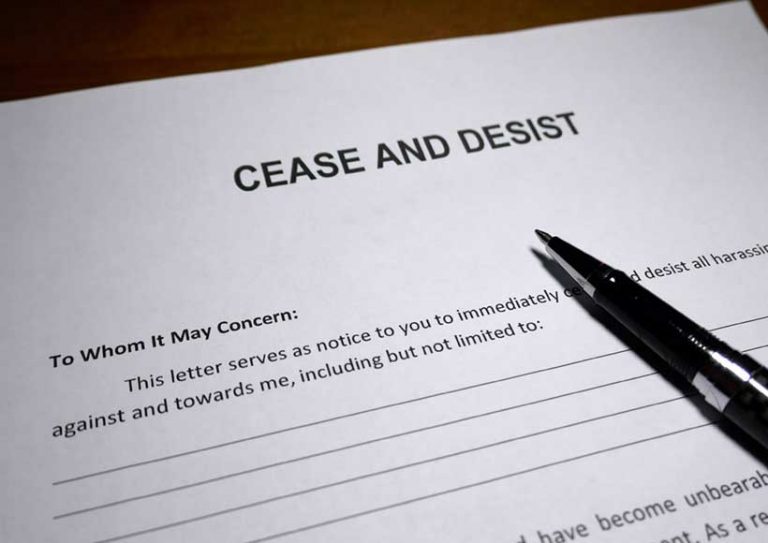Suing a Foreign Patent Infringer
By Michael Albert, Jason Balich and Alexandra Kim
December 3, 2021

Michael Albert is a shareholder at Wolf Greenfield. He focuses on patent litigation. Michael.Albert@WolfGreenfield.com
Jason Balich is an associate at Wolf Greenfield. He represents clients in intellectual property matters and commercial litigation. Jason.Balich@WolfGreenfield.com
Alexandra Kim is an associate at Wolf Greenfield. Her experience includes writing patent validity opinions, and researching complex legal issues for inter partes review proceedings and proceedings at the district court level. Alexandra.Kim@wolfgreenfield.com
Published in Today's General Counsel, December 2021
A foreign company sees your success in the U.S. market and copies your product, infringing your U.S. patent in the process. How do you make them stop?
Start with a cease and desist letter. The foreign company may simply not have examined whether your product or service is protected by a patent. Sending a letter explaining their infringement is often a good first step and may yield results. If they don’t stop, the letter and the infringer’s response could help establish personal jurisdiction or demonstrate willful conduct, potentially allowing recovery of multiple damages and attorneys’ fees. An aggressive letter is not risk-free, however. It can enable the defendant to file a declaratory judgment in an unfavorable forum.
If a letter doesn’t work, it may be time for litigation. Your task then is to decide where to file your infringement action.
If the foreign company imports an infringing product or a product made by an infringing process, and you have the required “domestic industry” (e.g., you make or sell your patented product in the United States or license others to do so), then you could file a complaint with the U.S. International Trade Commission (ITC). There are many benefits to ITC litigation. First, it moves quickly — about eighteen months from initiation until a final order. Compare that with two or three years to bring a patent infringement case to trial in a federal district court. Second, at the ITC, you don’t need to prove personal jurisdiction over the foreign company. The jurisdiction is over the infringing products. Third, if you win, you are almost automatically entitled to an “exclusion order” keeping the infringing goods out of the country. But the ITC cannot offer all the relief you may be seeking. Only federal district courts can award monetary damages.
If you cannot file in the ITC or are primarily seeking damages rather than an exclusion order, federal district court may be the appropriate forum. You will, however, need to show personal jurisdiction over the infringer in that court. If the foreign infringer has a physical location such as an office in the state where the court is located, it will be subject to personal jurisdiction there. Intentionally targeting that state, for example, by selling products or services directly into that location generally suffices as well. Murkier jurisdiction questions arise if all you have is the exchange of letters, but that can help. Also helpful is a federal law that allows you to sue a foreign defendant in any state’s federal courts if the defendant does business in the United States (e.g., displaying products at a trade show), but lacks sufficient connections to any one state to be subject to jurisdiction there.
The next task is serving the complaint and summons (or “notice of investigation” in an ITC case). This is critical because improper service can lead to the dismissal of the lawsuit.
Historically, the ITC served the complaint and notice of investigation. But during the Covid pandemic, the ITC has temporarily required the complainant to effectuate (and record) such service. The ITC’s rules allow for electronic service if no other form of service is possible. It is critical to follow the Commission’s instructions and raise any issues relating to service with the administrative law judge.
For district court actions, it has always been the plaintiff’s responsibility to serve the complaint and summons. A common method of serving foreign defendants is through the Hague Convention. A copy of the complaint and summons (and if required, a translation that includes the patent) is provided to the foreign country’s central service authority tasked with serving the defendant and providing proof of service. This process can take months or even years, although if more than six months have elapsed after diligent efforts had been made, the U.S. court can consider entry of a default judgment.
Some foreign countries allow service by mail. Where mail service isn’t allowed, district courts can authorize alternative methods of service. For example, some courts have authorized serving foreign defendants by email or through other electronic media, such as Facebook and WhatsApp. Using alternative means of service, however, is not automatic, and generally follows extensive efforts to comply with the Hague process.
Different U.S. judges have taken differing views on when and how alternative service should be allowed. One judge in a popular patent venue this past September allowed service on a foreign company through its U.S. attorneys. The Federal Circuit, in denying a mandamus petition, acknowledged the district courts’ discretion on alternative service issues. Still, attempting to comply with the target country’s rules is an important first step before seeking special dispensation from the court.
Although suing a foreign defendant for patent infringement isn’t always easy, the ITC and district courts stand ready to adjudicate your complaint if a non-judicial approach has proven ineffective. Using the ITC and court system requires a few up-front considerations, such as picking an appropriate forum that has jurisdiction and can provide the remedy you seek, and ensuring proper service. The investment into these early considerations will help increase the chance of achieving the results you’re looking for and getting the foreign infringer to stop.
Must read intelligence for general counsel
Subscribe to the Daily Updates newsletter to be at the forefront of best practices and the latest legal news.
Daily Updates
Sign up for our free daily newsletter for the latest news and business legal developments.




